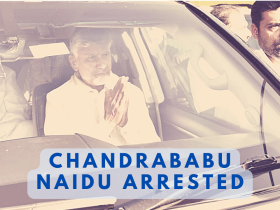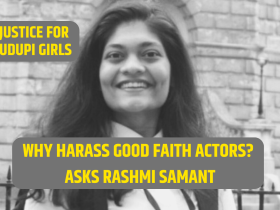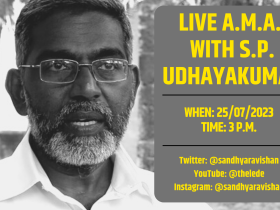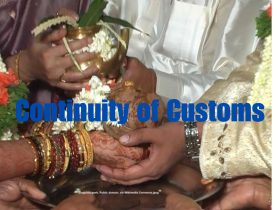A short story about Hanuman to tell you why you need to know more about your Indic heritage before you bandy about a name or an icon, angry or not!
Anjaneya, Maruti, Hanuman, Vayuputra, Bajrang Bali… call him what you will but he remains a popular deity who is beloved to many. Karnataka has him in the eye of a frenzied controversy, but am sure the Chiranjeevi, or the eternal one, does not care either way. For Hanuman, it is only Lord Rama in his heart, and no human emotion of anger, hate, disappointment or any other, can deflect his love.
Born of a mother who had in her last birth been a celestial maiden, Anjaneya took on her name – Anjana. Those who know of his childhood antics know that he is invincible. Mistaking the sun to be a ripe fruit, he was attacked by Indra with his thunderbolt, resulting in a disfigured jaw. That’s how he came by the name Hanuman, ‘hanu’ meaning jaw and ‘man’ meaning disfigured.
Now the thing is, thanks to a gentle curse from some rishis, Hanuman remains unaware of his own powers, his own greatness, all his life. He is most humble; he is loyal and always triumphs. He is tenacious and does not give up. There is no failure in Hanuman’s ventures.
Hanuman is also no ordinary individual. He learnt the scriptures and all divine knowledge from Lord Surya, he learnt the yogas from his father, the wind god Vayu, and from Lord Shiva. He was blessed by the Goddess Sarasvati, that he would be accomplished in all the arts – music, dance and poetry.
Indeed, in all ways, he is the Indian ideal of a perfect and accomplished child.
After meeting Rama and Lakshmana, Hanuman could not but develop a deep love and devotion to the older Ikshvaku prince. His mission in life became the rescue of Sita, and his adventures are well told and retold.

But the lesser known stories of Hanuman reflect his wisdom, his sweetness, his power and his equanimity. One such, goes thus. In the quest for Sita, when Hanuman reached Lanka and explored the city, who should he see but the Lord Shani, imprisoned in Ravana’s dungeons! He freed the god from his shackles and just as he was about to leave, Shanideva said in gratitude, “Anyone who prays to you, O Hanuman, will not feel the effects of my presence in their horoscope.”
Later, when Hanuman was engaged in building the bridge to Lanka for Rama, the very same Shanideva appeared. He said, “O Hanuman, my time to enter your horoscope has come.” Concerned, Hanuman replied, “O Shanideva! I have to help Rama get Sita back. I cannot have any adverse events happening to me at this time, thanks to your presence. Can you postpone your entry into my horoscope?”
However, Shanideva was adamant. He did not care that if it were not for Hanuman, he would still be shackled in the dungeon of Ravana. “So be it,” said Hanuman. Shani hopped on to Hanuman’s head gleefully.
While helping the building of the bridge, Hanuman was bringing rocks from the mountains and strong as he was, he placed a few boulders on his head, and held one in each hand. Shanideva, crushed under the weight of the boulders, tried to shout out to Hanuman to spare him. But Hanuman was too intent on his work to listen. He kept going to and fro, placing boulders on his head and holding some in his arms, as he hopped from the mountains to the seashore, and back.
Finally, Shanideva begged Hanuman in that moment just before he placed a boulder on his head, “Stop, stop! Let me go. I cannot bear this.” Hanuman allowed him to hop off.
“Huh,” said Shanideva, “The few minutes on your head felt like seven-and-a-half years!” Then he laughed, “Whoever is having me in their horoscope for seven-and-a-half years Hanuman, they just have to pray to you and my effects will reduce.” So Hanuman is the only god who can mitigate the deadly effects of Shanideva in anyone’s life.
When young, Hanuman received the blessing that he would be a Chiranjeevi. He would live, was the blessing, for as long as the Ramayana would be told in the world. Which is why, Hanuman is truly a living god for so many.
And having been born on what is today known as the Anjanadri Hill (near Hampi in Karnataka) or the Anjanadri Betta as it is locally known, he must visit the place of his birth now and then. He would also possibly be part of any discourse involving the telling of the story of his beloved Rama and Sita, in his favourite disguise – that of a Brahmin.
If he was out and about during the frenzied election campaigning, he would have been even more amazed at the iconography of the ‘angry’ Hanuman that seems to have become so popular today. He may have even laughed at how his name has been tossed about, and even become an election slogan.
Jai Bajrangbali!












Leave a Reply